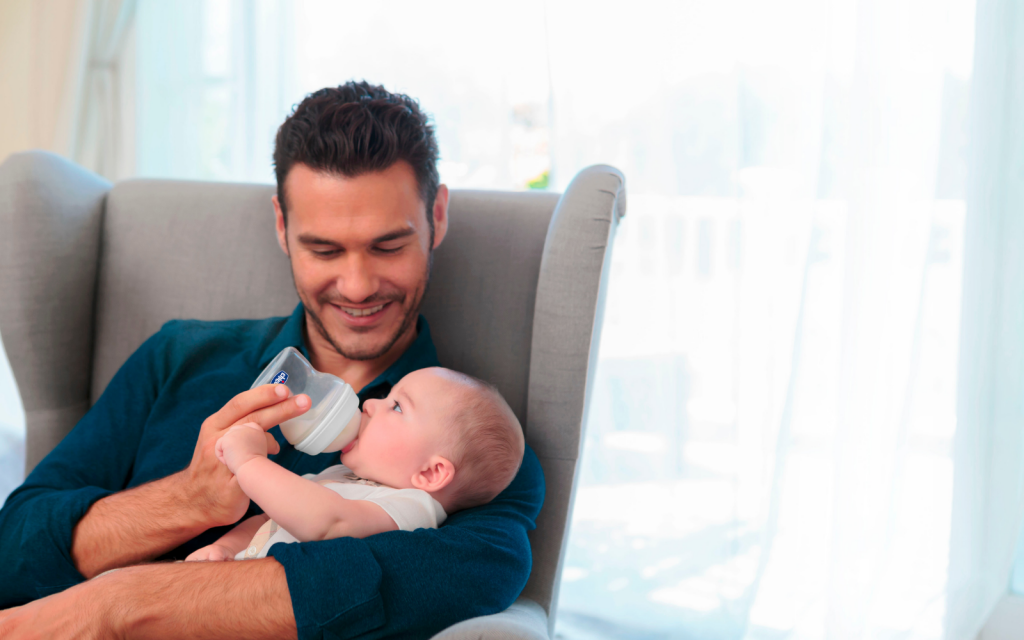There are many reasons why a mum bottle feeds her baby with expressed breastmilk. Some mums and babies are separated for medical reasons, and some return to the workplace.
Other common reasons include:
- Breast refusal or baby is unable to latch
- Personal preference
- Emotional reasons
Some mums worry that they won’t bond with their baby compared to if they were breastfed. We are here to tell you something…
That is simply not true.
Rest assured that you can still bond with your baby if you don’t breastfeed. Being a primary caregiver, you’ll always be providing a great deal of tender care to your little one. Plus, during cuddles and feeds, you can enjoy lots of skin-to-skin contact.
Pumping
By using a breast pump, breastmilk can be collected in a sterile container and stored in the fridge or freezer. This will help your baby still be nourished by your breastmilk when you are at work or away from them.
Your breasts might still feel tender when pumping breastmilk. Thermogel Breast Pads help mothers during expressing sessions to provide relief from breast engorgement and pain. Using the pads before pumping can help stimulate and support the flow of milk.
Choosing the right bottle to feed your baby expressed breastmilk
When opting for mixed feeding or bottle feeding with breastmilk (particularly in the first few months of life), try and use a bottle that imitates breastfeeding as much as possible to ensure your baby’s latch is similar to their latch on the breast. Choose a feeding bottle with a wide-angled teat for the first few months, to provide a broad surface for the lip to rest on (like the breast).
The Chicco NaturalFeeling bottle range is the best way to combine breast and bottle feeding. The angled teats are the ideal position for newborns, as it helps to replicate the instinctive way a baby feeds.
Tip – keep the bottle teat full of milk when feeding, to minimise pockets of air being caught in the milk before it enters the baby’s mouth.
How often and how much?
When a baby feeds from the breast, the amount they drink can vary between feeds. This too can be the same for when a baby is drinking breastmilk from the bottle.
The Australian Breastfeeding Association outlines that it is possible to express milk bottle feed on demand. When exclusively expressing, they suggest making up smaller bottles (e.g., about 60 mL) and top baby up with additional small amounts as needed.
Supply
If you notice a change in your supply, there are a few things that you can do to increase it. A few handy things to do, include:
- If you can, express more times over a 24-hour period. Instead of expressing for longer sessions, doing it more often for a shorter time is more effective at increasing supply.
- Increase skin-to-skin time with your baby.
- Continue to pump until a few minutes after your milk flow stops.
Storage
When storing expressed breastmilk, it’s vital to maintain good hygiene, so the milk is safe to give to the baby in the future. Our NaturalFeeling Milk Storage Container is ideal for storing expressed milk and attaches onto the Natural Feeling Manual Breast Pump.
Guidelines from raisingchildren.net.au describe how long you can store breastmilk at different temperatures and when you should use stored or frozen breastmilk:
Freshly expressed breastmilk
You can store breastmilk:
- at room temperature (26ºC or lower) for 6-8 hours
- in the fridge (4ºC or lower) for up to 72 hours – the best spot is the back of the refrigerator where it’s coldest
- in the freezer compartment (-15ºC or lower) inside a fridge for two weeks
- in the freezer section (-18ºC or lower) of a refrigerator with a separate door for three months
- in a chest or deep upright freezer (-20ºC or lower) for 6-12 months.
Previously frozen breastmilk (thawed in the fridge but not warmed).
You can store breastmilk:
- at room temperature (26ºC or lower) for four hours or less – that is, until the next feed
- in the fridge for up to 24 hours – the best spot is the back of the refrigerator where it’s coldest.
Breastmilk thawed outside the fridge in warm water.
You can store breastmilk:
- at room temperature (26ºC or lower) until the end of the feed
- in the fridge for four hours or until the next feed.
Do not refreeze and serve previously frozen breastmilk.
Tip, if your baby doesn’t finish their feed of expressed breastmilk, you can’t use it for another feed. You should throw it away. Store breastmilk in small amounts, and to prevent waste, only use what you need.
Tackling the feeding journey may feel overwhelming. Our breast care, feeding support pillows and sterilisers will help keep you on track.
Here’s to fed babies and happy days (and nights!).
Team Chicco
#ParentWithMore

